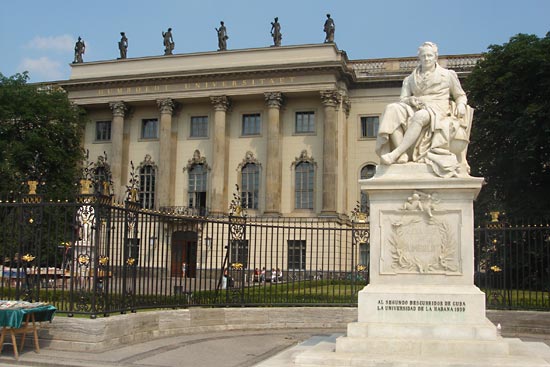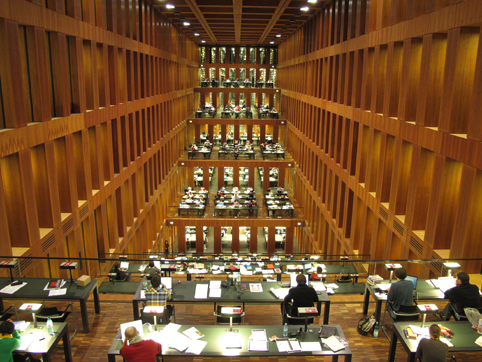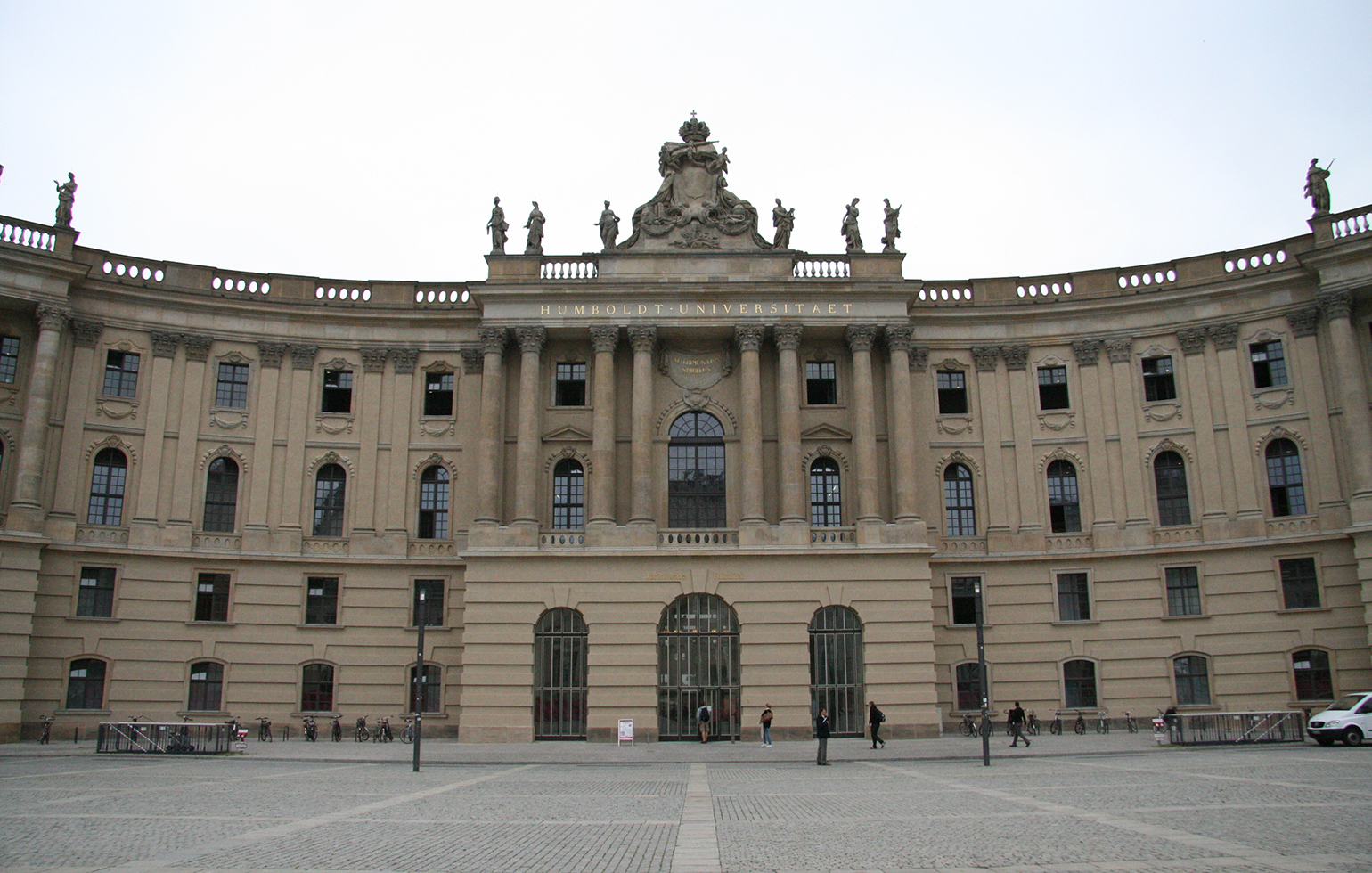The Humboldt University of Berlin (German: Humboldt-Universität zu Berlin, HU Berlin) is one of Berlin's oldest universities, founded on 15 October 1810 as the University of Berlin (Universität zu Berlin) by the liberal Prussian educational reformer and linguist Wilhelm von Humboldt, whose university model has strongly influenced other European and Western universities. From 1828 it was known as the Frederick William University (Friedrich-Wilhelms-Universität), and later (unofficially) also as the Universität unter den Linden after its location in the former palace of Prince Henry of Prussia (1726–1802) which his brother, King Frederick II, had built for him between 1748 and 1753 on the avenue Unter den Linden. In 1949, it changed its name to Humboldt-Universität in honour of both its founder Wilhelm and his brother, geographer Alexander von Humboldt. In 2012, the Humboldt University of Berlin was one of eleven German universities to win in the German Universities Excellence Initiative, a national competition for universities organized by the German Federal Government. The university has educated 29 Nobel Prize winners and is considered one of the most prestigious universities in Europe overall as well as one of the most prestigious universities worldwide for arts and humanities.
History
Early history
The first semester at the newly founded Berlin university occurred in 1810 with 256 students and 52 lecturers in faculties of law, medicine, theology and philosophy under rector Theodor Schmalz. The university has been home to many of Germany's greatest thinkers of the past two centuries, among them the subjective idealist philosopher Johann Gottlieb Fichte, the theologian Friedrich Schleiermacher, the absolute idealist philosopher G.W.F. Hegel, the Romantic legal theorist Friedrich Carl von Savigny, the pessimist philosopher Arthur Schopenhauer, the objective idealist philosopher Friedrich Schelling, cultural critic Walter Benjamin, and famous physicists Albert Einstein and Max Planck. The founders of Marxist theory Karl Marx and Friedrich Engels attended the university, as did poet Heinrich Heine, novelist Alfred Döblin, founder of structuralism Ferdinand de Saussure, German unifier Otto von Bismarck, Communist Party of Germany founder Karl Liebknecht, African American Pan Africanist W. E. B. Du Bois and European unifier Robert Schuman, as well as the influential surgeon Johann Friedrich Dieffenbach in the early half of the 1800s. The university is home to 29 Nobel Prize winners.
The structure of German research-intensive universities, such as Humboldt, served as a model for institutions like Johns Hopkins University. Further, it has been claimed that "the 'Humboldtian' university became a model for the rest of Europe with its central principle being the union of teaching and research in the work of the individual scholar or scientist."
Reopening
The Soviet Military Administration in Germany (SMAD) ordered (Befehl-Nr. 4) the opening of the university in January 1946. The SMAD wanted a redesigned Berlin University based on the Soviet model, however they insisted on the phrasing "newly opened" and not "re-opened" for political reasons. The president of the German Central Administration for National Education (DZVV), Paul Wandel, in his address at the January 29, 1946, opening ceremony, said: "I spoke of the opening, and not of the re-opening of the university. The University of Berlin must effectively start again in almost every way. You have before you this image of the old university. What remains of that is nought but ruins." The teaching was limited to seven departments working in reopened, war-damaged buildings, with many of the teachers dead or missing. However, by the winter semester of 1946, the Economic and Educational Sciences Faculty had re-opened.
The Workers and Peasants Faculty (German: Arbeiter-und-Bauern-Fakultät) (ABF), an education program aimed at young men who, due to political or racial reasons, had been disadvantaged under the Nazis, was established at the university during this time. This program existed at Berlin University until 1962.
Today
After the unification of East and West Germany, the university was radically restructured and all professors had to reapply for their positions. The faculty was largely replaced with West German professors, among them the historian Heinrich August Winkler. Today, Humboldt University is a state university with a large number of students (36.986 in 2014, among them more than 4,662 foreign students) after the model of West German universities, and like its counterpart the Free University of Berlin.
The university consists of three different campuses namely Campus Mitte, Campus Nord and Campus Adlershof. Its main building is located in the centre of Berlin at the boulevard Unter den Linden and is the heart of Campus Mitte. The building was erected on order by King Frederick II for his younger brother Prince Henry of Prussia. All the institutes of humanities are located around the main building together with the Department of Law and the Department of Business and Economics. Campus Nord is located north of the main building close to Berlin Hauptbahnhof and is the home of the life science departments including the university medical center Charité. The natural science together with computer science and mathematics are located at Campus Adlershof in the south-east of Berlin. Furthermore, the university continues its tradition of a book sale at the university gates facing Bebelplatz.
Organization
These are the nine faculties into which the university is divided:
- Faculty of Law
- Faculty of Mathematics and Natural Sciences (Geography, Computer Science, Mathematics, Chemistry, Physics)
- Faculty of Life Sciences (Agriculture and Horticulture, Biology, Psychology)
- Charité – Berlin University Medicine
- Faculty of Philosophy I (Philosophy, History, European Ethnology, Department of Library and Information Science)
- Faculty of Philosophy II (Literature, Linguistics, Scandinavian Studies, Romance literatures, English and American Studies, Slavic Studies, Classical Philology)
- Faculty of Humanities and Social Sciences (Social Sciences, Cultural Studies/Arts, Asian/African Studies (includes Archeology), Gender Studies, Sport science, Rehabilitation Studies, Education, Quality Management in Education)
- Faculty of Theology
- Faculty of Economics and Business Administration
- Furthermore, there are two independent institutes (Zentralinstitute) that are part of the university:
- Centre for British Studies (in German: Großbritannienzentrum)
- Humboldt-Innovation (research transfer and spin-off service)
- Museum für Naturkunde (Museum of Natural History)












